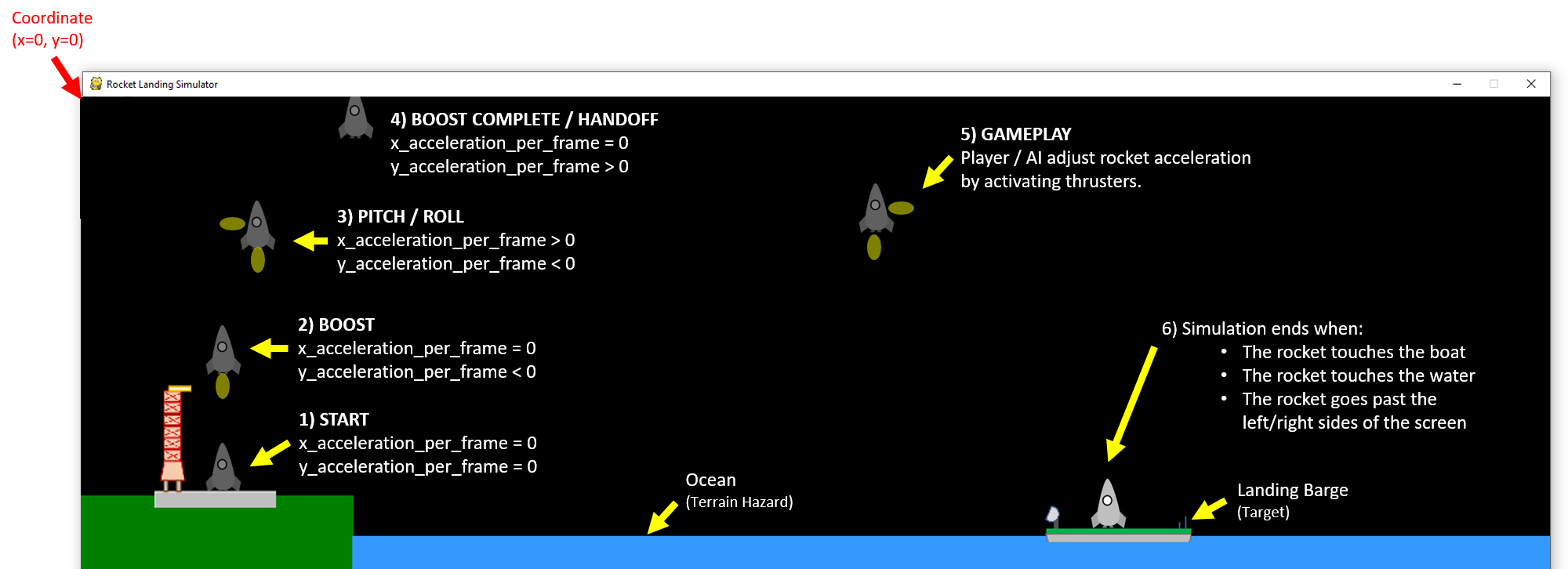

- #Rocket simulation program software
- #Rocket simulation program simulator
- #Rocket simulation program free
Supports both English and Metric units, and you can fly your rockets on the The flight through parachute deploy and recovery.īottle rockets, and ballistic shells in addition to solid model rockets. You can pause at any time to record data and then continue Where you can launch your rocket and observe When you have a design that you like, you move to the pad, The program computes the center of gravityĪnd pressure for your rocket and determines the stability. The rocket and determines the drag coefficient from a table of experimental data. You can also selectĭifferent materials for each component. Size, and shape of the rocket body, the fins, the nose cone. You can change design variables including the
#Rocket simulation program simulator
Is a simulator that models the design and flight of a model rocket. Science, Life Science, Science and Technology, Science in PersonalĪt the NASA Glenn Research Center in an effort to foster hands-on, inquiry-based learning National Science Standards: Science as Inquiry, Physical Geometry from an Algebraic Perspective, Trigonometry, Discrete Mathematics,Ĭonceptual Underpinnings of Calculus, Mathematical Structure.

Mathematics as Reasoning, Mathematical Connections, Algebra, Functions, National Mathematics Standards: Mathematics as Problem Solving, Open Rocket allows you to choose one of 5 different finish types (rough, unfinished, regular paint, smooth paint and polished), but this is a poor substitute for being able to adjust the drag coefficient number to get a precise match to the flight.RocketModeler, KiteModeler, the Atmosphere Applet and the GasLab meet many of the National Mathematics and Science Standards. This is critical if you wish to match the simulation to the measured rocket altitude, because no theoretical drag calculation can figure out how smooth your rocket is or match the quality of finish (if any). Another feature it has, one which Open Rocket lacks, and which is very important in TARC, is the ability to manually override the drag coefficient calculations with a user supplied value. This is nice, but it doesn’t matter much in TARC, as most entries are fairly straightforward 3 or 4 FNC (fin and nose cone) beasties.

RockSim has the lead here, as it can handle more sophisticated designs involving pods, tube fins, strap-on boosters, and so forth. Both RockSim and Open Rocket can very accurately simulate the flight of the model, using sophisticated algorithms and integration routines to figure out acceleration, speed, altitude, and a host of other parameters. It must a) be accurate in simulating the rocket flight, and b) be easy to use, especially in putting together the design. However, be aware that SpaceCAD is out there, and it may be a good choice for some teams check out the website for its features and capabilities.įrom my perspective, a rocket design program must have two characteristics in order to be useful in TARC. I haven’t used SpaceCAD in years – I switched to a Mac back in 2007 – so I will focus on comparing RockSim and Open Rocket.
#Rocket simulation program free
#Rocket simulation program software
TARC is like the real world of rocket design in that the teams must resort to design/simulation software to help flesh out the initial concept, making sure it can meet the goals before pressing on to actual construction/testing.


 0 kommentar(er)
0 kommentar(er)
